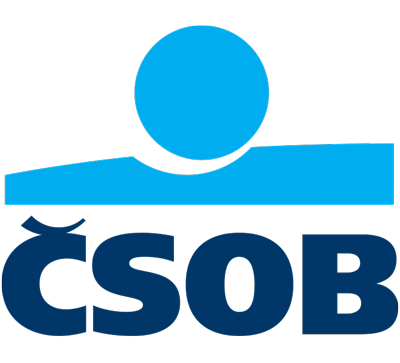Nothing more and nothing less remained of the decade and more old threats to make architects useless. “Machine hallucinations” by DeepHimmelb(l)au, Tom Mayne’s operational strategies … to generate output that could never be predicted, or Daniel Bolojan’s Parametric semiology study under the supervision of Patrick Schumacher (all cited in section (2)) neither took over the architects’ work nor they delivered a new quality. Towards the end of the 2010s, creative AI efforts in architecture focused on designing facades and room interiors, and creating floor plans of buildings: in both areas without providing a solution applicable on a professional level. These models generally apply statistical approaches of image processing based on input-output pairings in supervised learning on GANs; as a representative of the latter class, Rayon has deserved notice in sections (2) and (5) of this paper. Giving way to diffusion models and other types of networks suitable for imitation-based, self-learn, or transfer learning techniques, in the architecture field, GANs and supervised-learning techniques represent no more state-of-the-art today.
Another class of AI-driven tools for architects are parametric tools such as Spacemaker, Cove.tool, Creo, or Autodesk Forma, delivering predictive simulations of technical infrastructure, and physical conditions in the interior and exterior of buildings, or preliminary proposals for urban-design solutions – the last, however of unusable quality as a rule.
In general, AI in architecture and built environment development experiences a plateau today. It was never a trailblazer, indeed; nonetheless, the current inactivity in the field sharply contrasts with the hectic making and emerging of LLMs, image- and video applications, robotics, and alike. Even the clashes of naturally conflicting interests in the field of training data and the use of R&D results avoid the field of AI in architecture and development of the built environment. This review, nonetheless, identifies novel impulses and opportunities that emerge both in the reviewed narrow field and its general/broad hinterland to revive the scene. No science fiction or beyond-the-horizon visions but feasible actions and currently or soon achievable incentives to R&D are concerned.
Starting from distinguishing between truly poetic, fundamentally individualistic creations and production (or, as other authors coin, of the 90%) architecture, the paper proposes to leave the first realm primarily to human creativity and concentrate the efforts on AI deployment to the latter. Consequently, the question of patterns´ exploitation arises. As opposed to software developers, architects are lagging in the utilization of existing solutions: even if the solutions´ databases were not organized and shared across the profession (as is a good practice and praxis with software codes) but only within studios, already the current state-of-the-art AI could enhance the efficiency, productivity, and quality of productive architecture making. The contribution can start with choice and evaluation – objective according to a set of criteria that can be as comprehensive as possible thanks to machine learning deployment. Specifying the criteria (that would later in the design workflow apply to optimize the proposal, too) is a question of human experience and remembering; as opposed to man, AI is significantly less prone to flaws in practice and remembering. A well-chosen and assessed pattern shortens the path to the final solution. Evaluating the design-in-process according to the already said set of criteria, AI can contribute along the path: not only at the end setting the trial-and-error approach that is a standard today but at any stage, after any step, enhancing the pace and efficiency and cutting costs of the process; the term advice whispering not only labels but spontaneously explains the technique.
Until this moment, state-of-the-art machine-learning approaches and techniques may do to fulfill the strategies proposed. Nonetheless, there is a vast realm of advanced AI models, networks, algorithms, and techniques that are waiting to be invited to the field of architecture and the built environment. Robotics and advanced imitation-based, self-learn, and transfer learning strategies offer a variety of approaches and solutions that fit architectural designing and built environment development planning much more than thought so far. In section (5), starting points and principles of the novel approach are discussed. A standard CAD/BIM software or, better, a platform liaising the parametric CAD realm and VR/XR realm of authentic architectural making such as Wearrecho (which section (2) introduces), shall be the robot, which a by Figure-1 and Phoenix (for both, see section (5)) inspired deep-, reinforcement-learning model shall steer and control. Every creative architect served by an AI assistant, apprentice-agent learning through encountering the task challenges, whether from a general or the studio´s background, is the vision.
Also, introduced in section (2), SMLs represent a novel class of strategies likely to have a say in the upcoming R&D on effective deployment of machine learning in architecture and built environment development due to their fundamental ingeniousness and adaptability.
As pointed out repeatedly in the paper, the gap in understanding the making of architecture on the one side and the thinking of computer scientists and code developers on the other has been an obstacle to faster and more productive R&D in AI in architecture and built environment development so far. To bridge it, introduced in section (3), three focal points have to be pursued in parallel: in short, the poetic nature of the conceptual making of architecture that precedes any parametrization, (second) concentration on making – on processes rather than on input-output pairings, and (third) the concurrence of the fundamental three- and more-dimensional spatiality and diachrony of both architecture and recently developed virtual reality- and spatial computing technologies together with the new theory of human thinking and intelligence that may be waiting for implementation in machine learning. Not only for architecture and the development of the built environment, in the light of the results of the ongoing research on the human Neocortex (which section (4) introduces) and in section (3) annotated Verses´ R&D in distributed AI together with novel, so far experimental computing techniques said in section (4), the question of the (possible) glass ceiling of existing paradigms of neural networks and machine learning algorithms also deserves exploration. The research and consequent development may, as annotated in the Introduction of this paper, turn into a singularity that, based on a three-plus spatiality and diachrony, intertwines human thinking and AI, the technology of VR and spatial computing, and architecture.
Beyond the understanding-gap issue, there are economic reasons to sideline AI applications for architecture. Delivering data essential for ensuring national security or enabling hundreds of millions to chat with a machine shows (much) more profitable than leveraging the quality of the living environment. Such reasoning has proven flawed by hard economic data, but still, it works; is it up to architects, governments, or society who profits from the qualities of architecture and the built environment to make the investors change the approach?
Essentially, the outcome of a singularity must be a breakthrough. In terms of this paper´s focus, the breakthrough will not have a form of catching up with and overcoming man in poiétic creativity. Today, we can only assume the form and nature of the breakthrough contribution; but we can take for granted that it will be technological. Not technological in the sense of today´s smart home or a smart city, not in the sense of today´s AI applications delivering images or videos when prompted. In the realm of architecture and the built environment, groundbreaking approaches and construction solutions, and materials shall be expected that will accommodate the visions of unleashed architectural creativity and achieve unprecedented levels of comprehensive sustainability and resilience.








